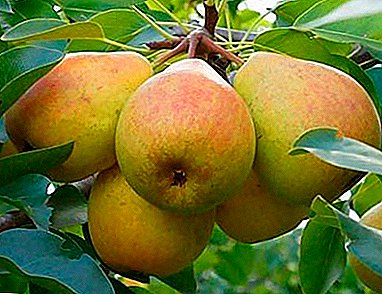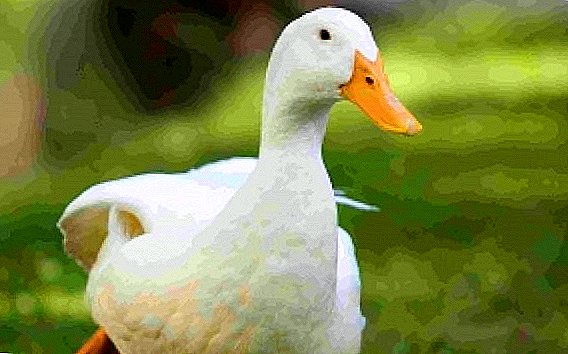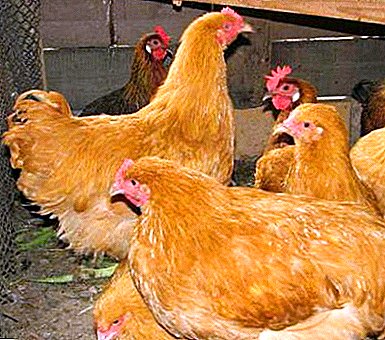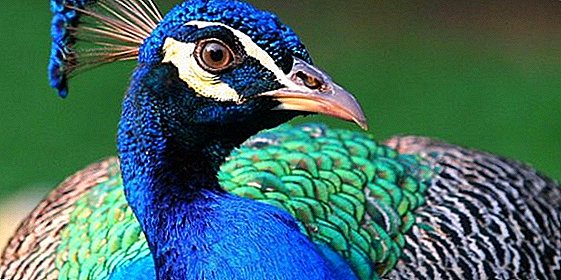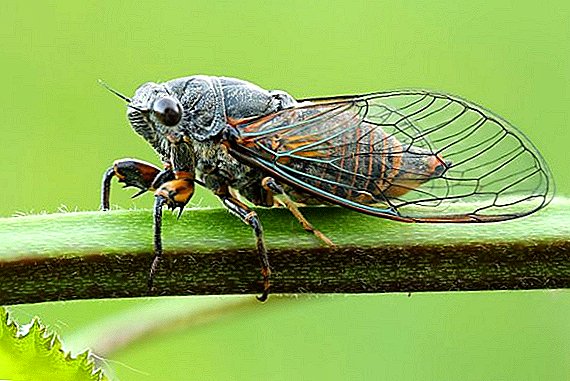 Many of us have heard the evening singing of crickets in the garden or in nature. But crickets and grasshoppers are not the only representatives of singing insects. Today we will talk about cicadas, their appearance and lifestyle.
Many of us have heard the evening singing of crickets in the garden or in nature. But crickets and grasshoppers are not the only representatives of singing insects. Today we will talk about cicadas, their appearance and lifestyle.
What is cicada
Cicadas are large insects found throughout the world. About two and a half thousand species of these insects are known to science, most of which live in countries with a hot climate; only eighteen of them are in the European part. Consider the scientific classification of insects:
| Classification | Definition |
| Kingdom | Animals |
| Type of | Arthropods |
| Class | Insects |
| Squad | Hemiptera |
| Suborder | Cycadic |
| Family | Singing Cicadas |

Kinds
In our latitudes, two types of singing cicadas are common: ordinary and mountainous, and the features of their appearance and life will be considered further.
Did you know? The image of the insect was often used in poetry, in the visual arts, it was depicted on coins and objects of decoration and everyday life. For example, on an ancient Greek coin on one side is a singing cicada.
Appearance
The "ordinary" species is also called the "ash-leaved leaflet": it has a predominantly black color of the body, head and back with yellow splashes. The length of the body together with the wings is no more than five centimeters. 
The mountain cicada is smaller in size: the length of its body with wings is no more than 2.5 cm. The color is very dark, almost black, there are blotches of a rich orange color.
Head
The leaf of the ash-tree is wide, much wider than the front of the back, head. A mountain-like head, on the contrary, has a much peculiar neck.
It will be interesting for you to learn about such insects as collembolas (springtails, poduras), medicine beetle, cruciferous flea, ladybug, wasps, rapeseed beetle, apple-flowered beetle, rapeseed beetle, cabbage soup, leaf-worm, golden-eyed and thrips.
On the sides of the head of both specimens there are two large eyes of a complex structure, in the central part there are three simple eyes, forming a kind of triangle. Presumably, thanks to this structure and the number of eyes, insects have excellent vision covering a large space. 
Antenna antennae with sensitive bristles and proboscis are located in the front part of the "muzzle".
Wings and legs
Both species have transparent wings. When they are folded, they completely cover the rear wings, since they are much longer. Over the entire surface of the wing are dark or painted in the inherent color of the veinlets.
The structure of the legs differs only in the number of spikes on the hips: a specimen of an ordinary has two spikes, and a mountain has three spikes. The femoral part of the legs is considerably thicker than the cylindrical calf. In total, individuals have three pairs of legs, ending in tenacious claws. 
Abdomen
The abdomen in both species is dense, thickened in females in the lower part, where the egg laying organ is located. With its help females pierce thin wood or green fabric of a plant and attach a laying. In males, there is also a copulative organ with which they fertilize the female.
Cicadas life
Insects are considered the most long-lived members of their class - some species live up to seventeen years.
Did you know? In the tomb of the Frankish king Childeric I, gold ornaments with garnet cicadas were found.

Habitat
Listosos ash-tree prefers the southern latitudes of the Mediterranean, Crimea, Caucasus and Transcaucasia. Insects fit the subtropical climate of these areas with its hot and dry summer.
Any apartment owner often encounters a parasite. Read how to get rid of moths, wood lice and cockroaches in the apartment.The species of mountain specimens is distributed over a wider territory: in addition to the above-listed regions, the insect lives on the territory of Russia, the west and north of Europe, in the countries of Asia. The view is accustomed to changing temperatures and higher humidity.
Insects spend time open to the sun, well warmed places:
- forest edges;
- steppes and meadows;
- green terraces on mountain slopes.

Nutrition
Piercing the tender bark or herbaceous plant tissue with a sharp proboscis, the cicadas suck the sap flowing down the stem. In the air, the juice hardens, turning into a kind of porridge, which is also nutritious.
Lifestyle
Settling on the branches of plants, during the day insects bask in the sun, feed, flying from a bush to a bush or a tree (the structure of the wings allows them to fly well). Contrary to popular belief about the nightly singing of cicadas, this phenomenon is rather the exception. Unusual sounds to attract the attention of the female insects make in the daytime. At night, only some species sing that in this way they try to protect themselves from predators. By the way, each subspecies has its own timbre and character of sound. Group "singing" is intended so that predators could not recognize a specific sound source.
Life cycle and reproduction
After mating, the female, piercing the bark of trees (ordinary) or the stems of grass and green shoots (mountain), lays in the formed lumen of the egg. The number of eggs in the clutch can reach six hundred pieces. 
After a month and a half, the larvae will hatch - thick, unwieldy individuals with a hard protective sheath and digging type of legs. The offspring for their own safety digs into the soil, closer to the root systems of the plants, the juices of which will feed them. The cicada's underground lifestyle is rather long, until the rudiments of wings appear: the common view is from two to four years, the mountain view is up to six years.
To transform into an adult individual, the larva creeps to the surface, where, climbing onto a bush or tree, sheds. After molting, the body of the newly-minted adult has not yet been strengthened, and it will take about six days to acquire hard cover. Adult specimens live for about three months.  The larva crawls to the surface
The larva crawls to the surface
Singing insects
Not only males sing, but also females of many species, although the sounds that they emit are not audible to our ears. We will understand exactly how cicadas sing.
Small pair of pads, located on the inside of the abdomen under the back of the pair of legs, called cymbals, emit sound pulses. The insect rhythmically shortens the abdominal muscle, and the dulcimer makes clicks so fast that they seem like a solid melody. The sound made by cymbals can be heard at a distance of eight hundred meters.
Role in nature and in human life
Cicadas in nature are an important link in the food chain: they are food for birds, lizards, hedgehogs, foxes, but this is not the only important role. Eating plants, insects can be both beneficial and harmful, for example, in agriculture. Consider further more. 
Useful and harmful properties
Given the omnivorous nature of individuals, they can cause great damage to grain, vegetable, fruit and berry and even melon crops, flowers. Insects equate to such pests as thrips. Sucking up all the plants and the juices, they reduce the yield, or even completely destroy the culture.
If you want to protect your garden from pests, take a closer look at how to get rid of ants, cockchafer, ground beetle, weevil, bark beetle, aprons and red beetles.
At the same time, in the wild with the participation of insects, the number of plants is regulated. In addition, insects are considered the soil-forming element of the ecosystem: dying, they saturate the soil with humus. 
Breeding cicadas
In many countries of Asia, Africa, in some cities of the USA, Australia there are farms for the cultivation of edible insects, including cicadas.
Important! Winged pests carry various diseases from plant to plant.Catching a pair for their own breeding, in principle, is not difficult: if you catch with your hands, you need to grab onto the wings, pressing them against the back, but it is easier to wield a net.
Content Features
Insects contain in boxes with a fine-meshed mesh for ventilation, and individuals at different stages of development live separately. Plastic containers with vents made for ventilation are suitable for a small farm. 
Of course, insects provide conditions as close to natural as possible: they maintain the necessary humidity and air temperature. To do this, you can purchase special devices with a thermostat and a timer.
To combat insect pests use special preparations - insecticides.At the bottom of the incubator, the soil is poured in which the larvae develop - when they grow up, they are transplanted into a separate box without land. As houses for insects use cardboard egg trays, the cells of which serve as separate dwellings.
Insects provide food - fresh grass, the stems of various plants, do not forget about water. 
Important! Be sure to maintain purity in the pits, especially when grown in food.
Exotic dishes
The popularity of insects as food objects provides a large amount of protein, which they contain. In addition, their shell has chitin - a derivative of chitosan, which helps regulate weight. 
If you believe reviews gourmets, to taste an exotic dish like asparagus. Not to be unfounded, we present to your attention a list of the most popular cicada dishes in some restaurants:
- quiche;
- pizza with grubs;
- fried in batter;
- baked on a skewer;
- spiced pate with white wine.
To summarize: listening to insect singing in the wild is fascinating, for many, it calms the nerves. As for the use of arthropods in food - it is a matter of taste for everyone.


